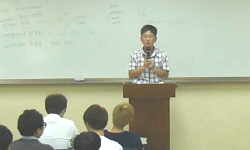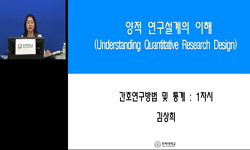The loess collapsibility and permeability are primarily controlled by the microstructure. This microstructural investigation of loess (L1 and S2) on the Loess Plateau in China is based on X-ray micro-computed tomography. The 3D microstructural feature...
http://chineseinput.net/에서 pinyin(병음)방식으로 중국어를 변환할 수 있습니다.
변환된 중국어를 복사하여 사용하시면 됩니다.
- 中文 을 입력하시려면 zhongwen을 입력하시고 space를누르시면됩니다.
- 北京 을 입력하시려면 beijing을 입력하시고 space를 누르시면 됩니다.
Three-dimensional Microstructure Characterization of Loess from South Jingyang Plateau, China = Three-dimensional Microstructure Characterization of Loess from South Jingyang Plateau, China
한글로보기https://www.riss.kr/link?id=A106560319
- 저자
- 발행기관
- 학술지명
- 권호사항
-
발행연도
2019
-
작성언어
-
- 주제어
-
자료형태
학술저널
-
수록면
28-28(1쪽)
- 제공처
-
0
상세조회 -
0
다운로드
부가정보
다국어 초록 (Multilingual Abstract)
The loess collapsibility and permeability are primarily controlled by the microstructure. This microstructural investigation of loess (L1 and S2) on the Loess Plateau in China is based on X-ray micro-computed tomography. The 3D microstructural features of particles and pores are quantitatively studied by analyzing statistical parameters. A total of 92% of the particles have sphericity that lies in the range between 0.5 and 0.9, the aspect ratio of 93% particles is between 0.3-0.7. 67% of the particles are oriented between 0°- 45° (the angle between the long axis of the grain and the horizontal plane). Loess exhibits complex pore structures and obvious anisotropy, as reflected by dense networks, wide pore size ranges and different pore throat radii and frequencies at different dip angles. From L1 to S2, the structure tends to become more compact, the pore size tends to decrease, and the connectivity tends to weaken. Pore structure, which provides space for water movement, has a profound influence on the mechanical behavior of soil, and the relationship between permeability and pore structure is discussed. The results demonstrate the positive role that the pore (>13 μm) proportion, pore connectivity and pore throat radius play in permeability. Both the pore throat radius and the permeability coefficient are greater in the vertical direction than in the horizontal direction, implying a large pore throat has a greater effect on water migration than that of multiple small pore throats.
동일학술지(권/호) 다른 논문
-
A Study on Vibration Measurement of Structures Using Developed Seismic Sensor
- 대한지질공학회
- ( Jong-hyun Lee )
- 2019
-
- 대한지질공학회
- ( Minho Son )
- 2019
-
- 대한지질공학회
- ( Fengyan Wang )
- 2019
-
Development of Analysis Technology for Geological Resource Spatial Data Service Extension Technology
- 대한지질공학회
- ( Il Ryong Kwon )
- 2019





 KISS
KISS






